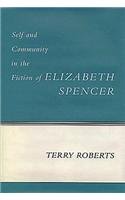Southern Literary Studies
1 total work
Although Elizabeth Spencer's best-known, early novels have received well-deserved attention, her later, more challenging fiction has been generally ignored or misread. In Self and Community in the Fiction of Elizabeth Spencer, conceived as a comprehensive introduction to Spencer's work, Terry Roberts argues persuasively for a reevaluation of the Mississippi native's writing, demonstrating clearly that throughout a career of thirty-five years Spencer has sustained a unique, profound artistic vision based on the idea of community, examining ever more closely its texture and implications, as her writing technique has grown increasingly sophisticated. The idea of community and the individual's relationship to it has pervaded southern literature, and as Roberts reveals, that theme runs throughout Spencer's novels as well, even when their settings are not in the South. In her early novels, such as The Voice at the Back Door (1956) and This Crooked Way (1952), Spencer uses traditional narrative form and an objective viewpoint in setting the action of her books within the context of a small southern community. With The Light in the Piazza (1960) and Knights and Dragons (1965), both set in Italy, she shows a growing interest in characters alienated from, though still strongly affected by, their community. In her next stage of writing, in cosmopolitan novels such as No Place for an Angel (1967) and The Snare (1972), Spencer examines more complex social communities marked by late-twentieth-century anxieties and dislocations, and penetrates the psyches of the disaffected and alienated. She also experiments with new techniques in narrative structure, chronology, imagery, and point of view as meansto dramatize how an individual both shapes and is shaped by the surrounding community. Unfortunately, many reviewers and critics misunderstood Spencer's innovative fiction. And ironically, Roberts maintains, it was just as her work was becoming less accessible that she was making
